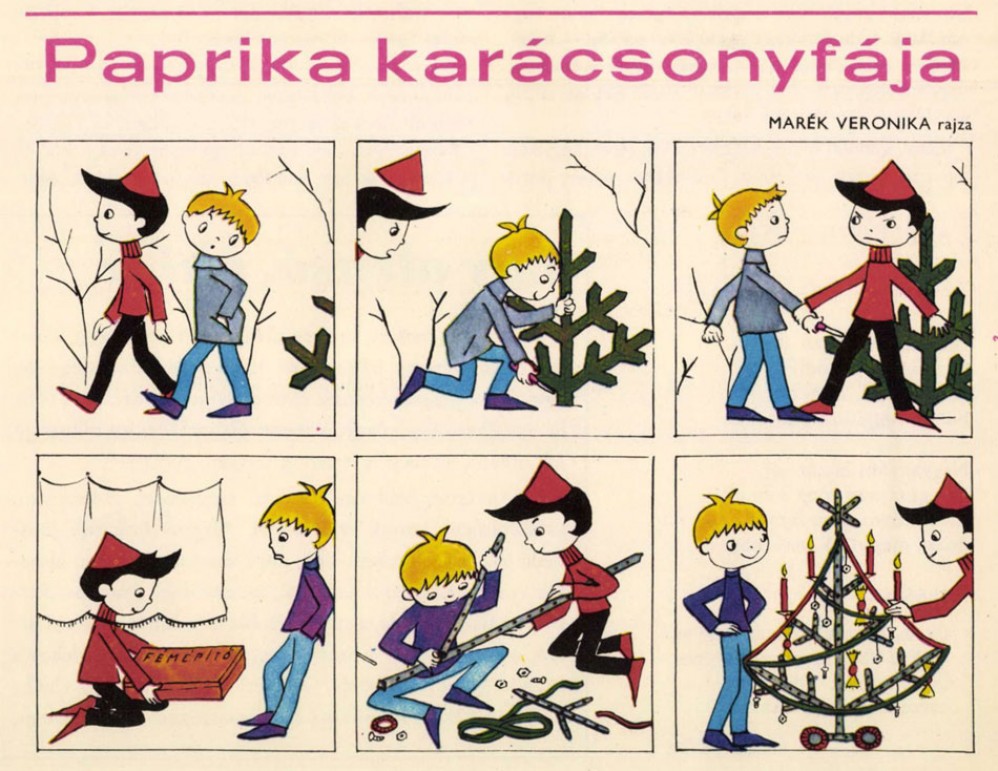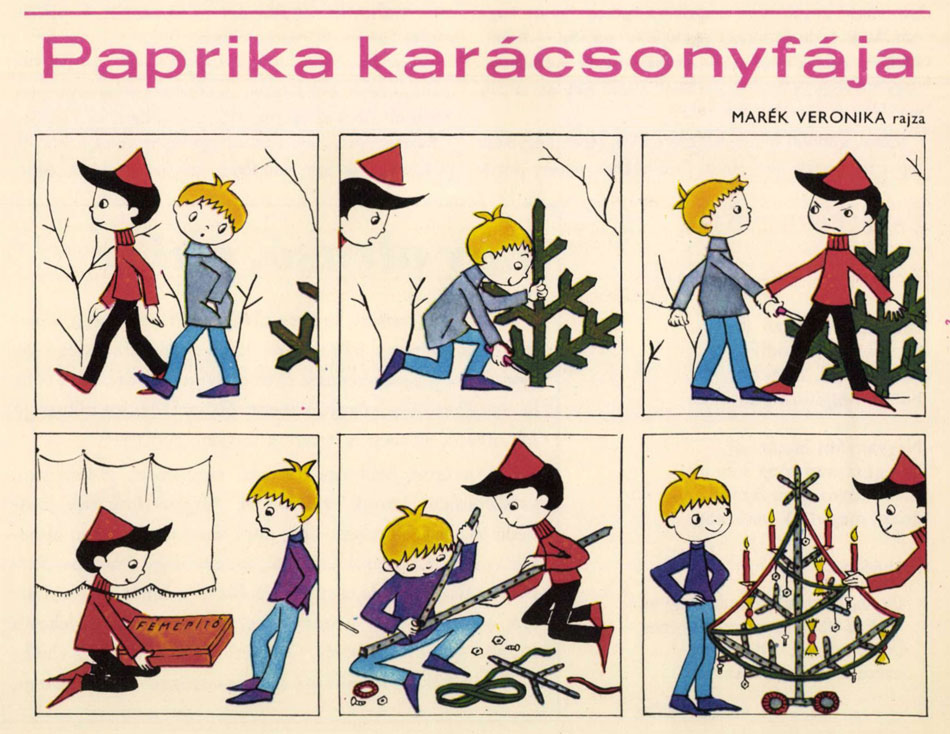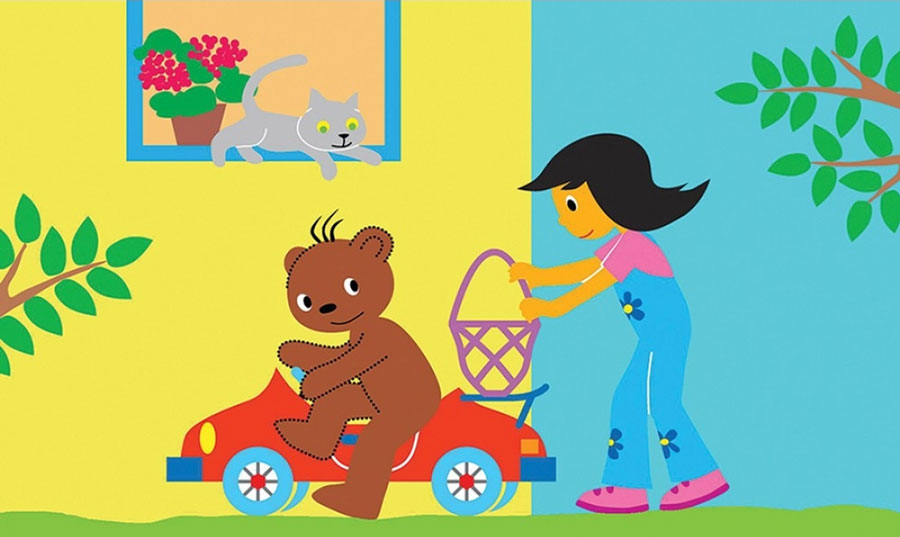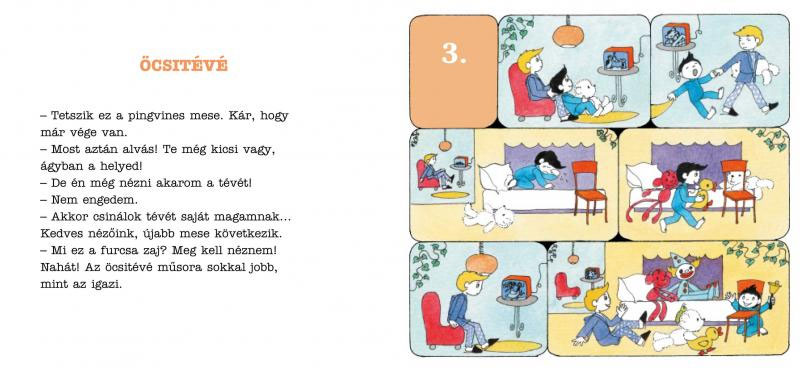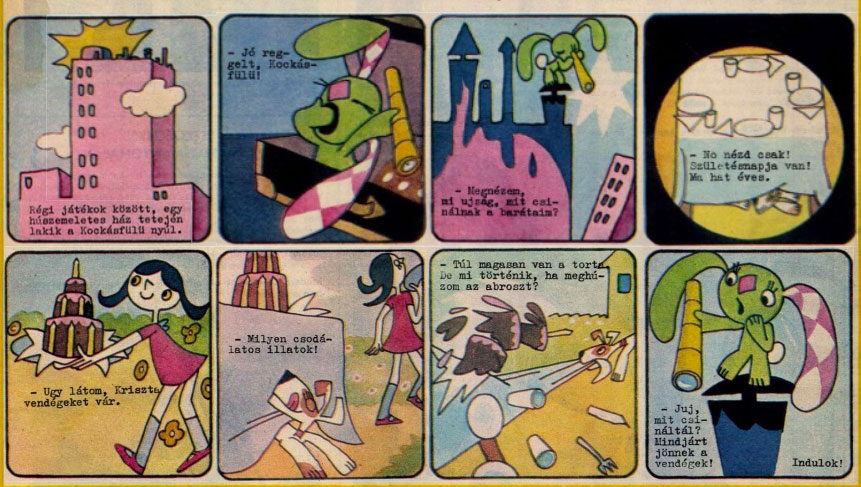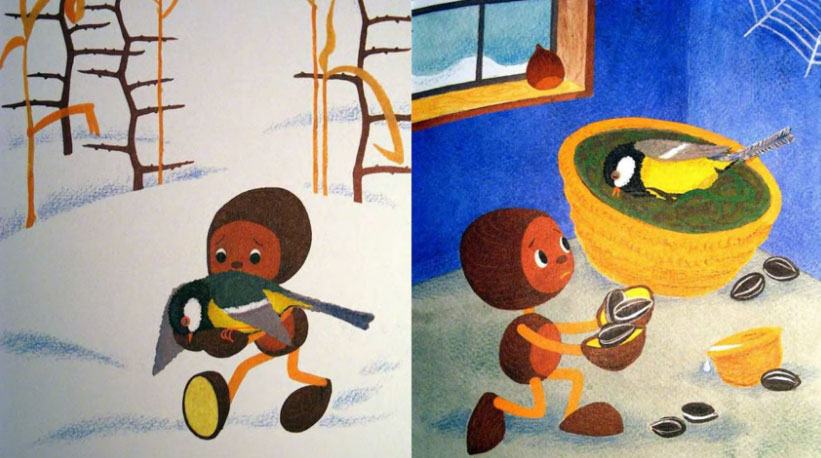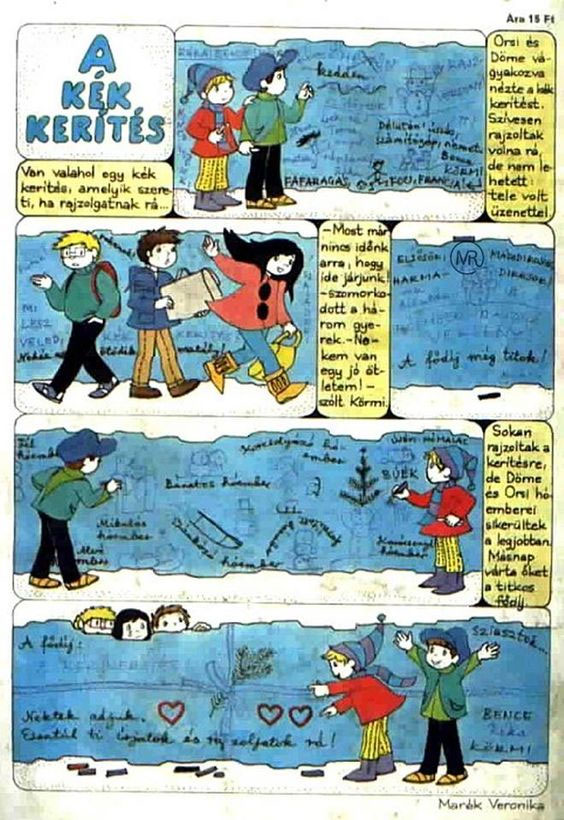'Paprika Karácsonyfája' (Kisdobos, 1965).
Veronika Marék is a Hungarian writer and graphic artist. She has worked for several media, including children's magazines, board games and TV programs, most notably the one about 'The Rabbit with Checkered Ears' (1977-1979). Among generations of Hungarians, Marék is best-known for her picture book series about 'Boribon the Teddy Bear' (1970- ) and 'Kippkopp', the little chestnut man (1980- ).
Early life and education
Veronika Marék was born in 1937 in Budapest. Her father was a doctor and part-time writer, her mother a dental surgeon. A big fan of children's books and picture stories since early childhood, Marék already learned how to read at age four. She later also turned to drawing, and at the Fazekas Mihály High School, she became fascinated with the theater. At age 17, she joined a puppet theater group that performed a marionette adaptation of Béla Bartók's one-act pantomime ballet 'The Wooden Prince'. In 1957 and 1958, Marék studied Set Decoration and Painting at the Moholy-Nagy University of Art and Design, and later spent two years at the State Puppet Theater, where in 1963 she received her degree as a puppeteer. Between 1961 and 1966, she additionally attended the liberal arts department of the ELTE University, majoring in Hungarian literature.
Children's books
At the start of her career, Marék combined her puppet theater work with writing and drawing. By 1963, she decided to fully focus on the latter two activities, with her main inspirations being the children's literature authors Vladimir Suteev, Munro Leaf and Antoine de Saint-Exupéry. Already at age 17, Marék made her first illustrated children's book, 'A Bem téri gyerekek' ("The Bem Square Children"), published in 1956. In the decades that followed, she created a great many more titles, most of them released by Móra Publishers. Much of her work has also been published abroad, with translations in German, Romanian, Polish, Serbian, English, Spanish, Japanese and Korean. One of Marék's major international successes was her 1961 book 'Tommy and the Lion', which since 1965 has received a new Japanese edition almost every year. On occasion, Marék has worked with other illustrators, for instance, her 1970 bestseller 'Amikor te kicsi voltál' ("When you were little"), illustrated by Anna F. Győrffi.
Boribon and Kippkopp
Since her debut in the late 1950s, generations of Hungarian toddlers have grown up with Marék's storybooks. Her best-known recurring character is the living teddy bear Boribon. He first appeared in the 1958 book 'Boribon, a játékmackó' ("Boribon, the Teddy Bear"), which has been reprinted many times. In this story, two mischievous brothers don't look after their toys, including their teddy bear Boribon. One day, they cut open his belly and leave him behind, after which Boribon walks away from home. When the boys are finally reunited with their toy, they promise to take good care of him in the future. It took until 1970 before the character returned in the booklet 'Boribon és Annipanni', in which he was paired with Annipanni, a little girl that became his regular human companion. Until 1976, Marék created four additional booklets with Boribon and Annipanni, before reviving the series again in 2005. Brave and sometimes helpless, Boribon still has some of the characteristics of a brown bear, but is at the same time a naïve little kid discovering the world.
Another well-known character by Verinoka Marék is 'Kippkopp' ("Knocknock"), a little chestnut boy, who has encounters with all kinds of forest animals. Since the first book in 1980, Marék has created seven additional installments of the series until 2016. 'Kippkopp' stories were also performed as puppet shows by the Kolibri Children's Theater.
'Öcsi és Bátyó' (from the 2008 book collection).
Comics for magazines
Between 1962 and 1989, Marék was also a regular writer and artist for the children's magazine Kisdobos, making comics and riddles. Her main character was Paprika ("Pepper", 1962-1965), a little boy in red who gets angry very often, but always manages to solve his problems by working together. In 1984, the anthology book 'Coffi, Pocak, Paprika' was released by Móra, collecting all the Paprika stories as a coherent narrative. On the back page of Kisdobos ran Marék's feature about the brothers 'Öcsi és Bátyó' ("Little Bro and Big Bro"). A book compilation of this series was released in 2008 by Vivandra Books. Another Kisdobos feature by Marék was 'A Kék Kerítés' ("The Blue Fence"), about a group of children who write and draw about their lives on a blue fence. Móra released a book of this series in 2015. Besides Kisdobos, Veronika Marék was a contributor to Dörmögő Dömötör, the magazine built around the fictional bear by novelist Zsigmond Sebők.
First appearance of 'A kockásfülű nyúl' in the newspaper Tükör (1975). Artwork by Zsolt Richly.
The Rabbit with Checkered Ears
At the Kisdobos offices, Marék first met fellow graphic artist Zsolt Richly, with whom she began a collaboration for animation projects. Produced by Pannónia Filmstúdió, Marék took care of the writing, while Richly served as animator and director. After the 1973 short film 'A Hétpöttyös Autó' ('The Seven-Dot Car'), they co-created the 26-episode animated children's TV series 'A Kockásfülű Nyúl' ("The Rabbit with Checkered Ears", 1977-1979), which ran every Saturday on the Hungarian TV channel Magyar Televízió. In the short pantomime films, a rabbit with big ears awakens every morning in a suitcase in the attic of a large apartment building. From the rooftop, he uses his binoculars to spot if someone needs his help, and then uses his ears as propellers to fly to the aid of one of the four main children characters. Prior to the TV show, the big-eared bunny appeared in a 1975 comic strip in the Tükör newspaper.
After its initial syndication in Hungary and its surrounding countries, the series appeared in about 90 other countries around the world, including the USA, where it ran on the 'Pinwheel' cable program on Nickelodeon. In later years, the rabbit character has become a cult icon of Hungarian animation, often described by U.S. fans as "bunny in a suitcase". It has appeared as plush toy and on merchandise items such as school accessories and pillows. Twelve new episodes were released in 1996, directed by Gábor Fischer and Vanda Arányi, and an additional one in 2018, created by Veronika Marék and director Barbara Bakos.
In 2002 and 2003, two DVD sets of the series were released, followed in 2007 and 2008 by three comic books with speech balloons, written by Veronika Marék and illustrated by Zsolt Richly.
Other activities
Besides print and film, Marék has also been a writer for other media. During the 1970s and 1980s, she was a writer for Hungarian national radio, working on shows like 'Csicseri Bolt' ("The Bric-a-Brac Shop"), 'Az Indián Tesó' ("The Indian Bro", 1976) and 'Az Üveghegyen át' ("Through the Glass Mountain", 1987). Between 1965 and 1986, she additionally wrote 23 puppet plays for the Puppet Pocket Library Journal. Since 1978, she has also been a writer and creator of family board games, including ones starring Boribon, Kippkopp and the Checkered Ears Bunny. Another area of expertise by Marék is writing slideshows for wall projectors.
Recognition
In 1962 and 1985, Marék received the Móra Book Publisher's Level Award. As one of Hungary's most prominent authors for children, she was additionally bestowed with the 1983 Youth Award, the 2006 Éva Janikovszky Award and the 2010 József Attila Award. In 2018, the city of Budapest honored her with the Award for Budapest, a recognition for civilians or communities with outstanding activity in any field.
'A Kék Kerítés' ("The Blue Fence").


